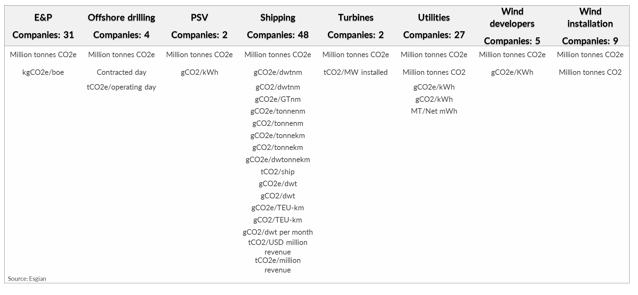By Aje Singh Rihel
Corporate emission reductions are pivotal to avoid global warming spiralling out of control, a reality that an increasing number of companies are recognizing with new commitments to climate targets. But are companies actually delivering on their climate promises? Can corporate climate targets be trusted? We analyzed more than 250 energy and shipping companies to find the answer.
Most companies do not have measurable climate targets
Approximately 40% of the analyzed companies do not have an intermediate climate target for the 2025-2035 time frame. Another 20% have an intermediate climate target but do not provide the information necessary to assess real performance. Recurrently, the missing piece was an accounting of baseline emissions. For instance, a company may commit to reducing its emissions by 50 % by 2030, but without specifying from which or to which level, the target is impossible to measure or quantify.
Target type anarchy disables intra – and cross-sectoral comparison
The remaining 40%, or around 100 companies, have published both an intermediate climate target and the information necessary to assess their climate target performance. However, their targets are suffering from a lack of standardization and harmonization.
In the absence of supporting frameworks, guidelines, regulations or a coordinating authority around climate target setting, the world of corporate climate targets is in a state of disorder. Companies set targets, target definitions and ambition levels using their best effort, with limited mechanisms allowing for alignment and consistency across industries. Consequently, incoherent target definitions, particularly around carbon intensity, make targets very difficult to interpret and compare across industry sectors. Even within sectors, companies operate with different target units that make them near impossible to compare.
Opacity around climate targets also increases the risk of creative target setting. In our analysis we found examples of companies which appeared to strengthen climate targets, but in practice, had simply re-based targets to a different starting year. With the stroke of a pen, a company can become more ambitious, and go from heavily under performing on an old target to over performing on a new target, all without committing to actual additional emission reductions. Tighter harmonization of target setting would increase transparency, more easily highlight key parameters in climate targets, mitigate green washing attempts, and foster trust.
Table 1: Emission reduction target types by industry sector

Companies with measurable climate targets are over performing
Setting aside the incoherence in climate targets, and the complexity in comparing climate targets, a reassuring finding from our analysis is that most companies with measurable intermediate climate targets are ahead of their respective target curves. In fact, almost 65% of the 250 companies analyzed are over performing on intermediate climate targets, while another 12% are less than 5% behind target. Given this finding, one can trust that most companies with a measurable intermediate climate target will deliver on their promises.
This begs the question, are companies’ ambitions too low? And, is it preferable to have lower ambitions coupled with higher performance, rather than higher ambitions and lower performance? These are important questions that are difficult to answer.
Chart 1: Intermediate emission reduction targets and target performance
In general, the harder-to-abate sectors such as E&P and maritime tend to be less ambitious and lower performing than utilities and renewables companies.
One reason could be that the fossil power sector has a higher abatement opportunity in the near term, for instance by phasing out coal-fired power generation. When the decarbonisation potential of the power industry eventually becomes exhausted, the hope is that harder-to-abate sectors will accelerate decarbonisation through technologies which, by then, will have become technologically and commercially viable.
Corporate climate targets can be trusted, but large room for harmonization
While most companies still do not have intermediate climate targets, or they have targets that cannot be measured or assessed, most companies that do have measurable intermediate climate targets are delivering emission reductions in accordance with their commitments.
However, in the absence of frameworks, guidelines or authorities that can enable standardization and harmonization, companies define targets individually and with a low degree of alignment. The result is opacity and climate target disorder.
So, can corporate climate targets be trusted? Yes, but it’s complicated. Is there room for improvement? Yes, without doubt.


